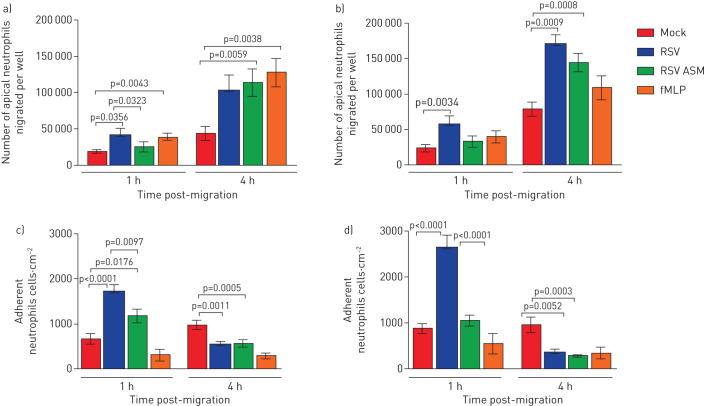FIGURE 2.
Respiratory syncytial virus (RSV) increases the numbers of neutrophils that migrate across infected nasal epithelial cell cultures. a) The numbers of apical neutrophils that migrated across RSV-infected airway epithelial cell cultures and were released into the apical surface media after 24 h infection. b) The numbers of apical neutrophils that migrated across RSV-infected airway epithelial cell cultures and were released into the apical surface media after 72 h infection. Data are presented as mean±sem of n=6 epithelial donors, n=6 heterologous blood donors. c) The number of neutrophils attached to mock- or RSV-infected human nasal ciliated epithelial cells after 24 h infection. d) The number of neutrophils attached to mock- or RSV-infected human nasal ciliated epithelial cells after 72 h infection. Neutrophil concentrations were quantified in the apical surface media using a plate reader and read against a standard curve. Adhered neutrophils were counted using ImageJ counting tool, the average number of neutrophils from all images is shown (five images per well from n=3 epithelial donors, n=2 heterologous blood donors and n=1 homologous blood donor). Bars represent the mean±sem for cultures mock-infected, RSV-infected, mock-infected and exposed to apical surface media (ASM) collected from RSV-infected cells or mock-infected and exposed apically to the chemoattractant N-formylmethionine-leucyl-phenylalanine (fMLP). Statistical comparison between all groups was performed using a paired t-test. Statistical significance is shown.

